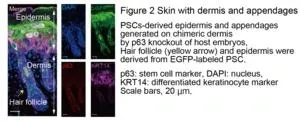(Press-News.org) CAMBRIDGE, MA — Quantum computers hold the promise of being able to quickly solve extremely complex problems that might take the world’s most powerful supercomputer decades to crack.
But achieving that performance involves building a system with millions of interconnected building blocks called qubits. Making and controlling so many qubits in a hardware architecture is an enormous challenge that scientists around the world are striving to meet.
Toward this goal, researchers at MIT and MITRE have demonstrated a scalable, modular hardware platform that integrates thousands of interconnected qubits onto a customized integrated circuit. This “quantum-system-on-chip” (QSoC) architecture enables the researchers to precisely tune and control a dense array of qubits. Multiple chips could be connected using optical networking to create a large-scale quantum communication network.
By tuning qubits across 11 frequency channels, this QSoC architecture allows for a new proposed protocol of “entanglement multiplexing” for large-scale quantum computing.
The team spent years perfecting an intricate process for manufacturing two-dimensional arrays of atom-sized qubit microchiplets and transferring thousands of them onto a carefully prepared complementary metal-oxide semiconductor (CMOS) chip. This transfer can be performed in a single step.
“We will need a large number of qubits, and great control over them, to really leverage the power of a quantum system and make it useful. We are proposing a brand new architecture and a fabrication technology that can support the scalability requirements of a hardware system for a quantum computer,” says Linsen Li, an electrical engineering and computer science (EECS) graduate student and lead author of a paper on this architecture.
Li’s co-authors include Ruonan Han, an associate professor in EECS, leader of the Terahertz Integrated Electronics Group, and member of the Research Laboratory of Electronics (RLE); senior author Dirk Englund, professor of EECS, principal investigator of the Quantum Photonics and Artificial Intelligence Group and of RLE; as well as others at MIT, Cornell University, the Delft Institute of Technology, the Army Research Laboratory, and the MITRE Corporation. The paper appears today in Nature.
Diamond microchiplets
While there are many types of qubits, the researchers chose to use diamond color centers because of their scalability advantages. They previously used such qubits to produce integrated quantum chips with photonic circuitry.
Qubits made from diamond color centers are “artificial atoms” that carry quantum information. Because diamond color centers are solid-state systems, the qubit manufacturing is compatible with modern semiconductor fabrication processes. They are also compact and have relatively long coherence times, which refers to the amount of time a qubit’s state remains stable, due to the clean environment provided by the diamond material.
In addition, diamond color centers have photonic interfaces which allows them to be remotely entangled, or connected, with other qubits that aren’t adjacent to them.
“The conventional assumption in the field is that the inhomogeneity of the diamond color center is a drawback compared to identical quantum memory like ions and neutral atoms. However, we turn this challenge into an advantage by embracing the diversity of the artificial atoms: Each atom has its own spectral frequency. This allows us to communicate with individual atoms by voltage tuning them into resonance with a laser, much like tuning the dial on a tiny radio,” says Englund.
This is especially difficult because the researchers must achieve this at a large scale to compensate for the qubit inhomogeneity in a large system.
To communicate across qubits, they need to have multiple such “quantum radios” dialed into the same channel. Achieving this condition becomes near-certain when scaling to thousands of qubits. To this end, the researchers surmounted that challenge by integrating a large array of diamond color center qubits onto a CMOS chip which provides the control dials. The chip can be incorporated with built-in digital logic that rapidly and automatically reconfigures the voltages, enabling the qubits to reach full connectivity.
“This compensates for the in-homogenous nature of the system. With the CMOS platform, we can quickly and dynamically tune all the qubit frequencies,” Li explains.
Lock-and-release fabrication
To build this QSoC, the researchers developed a fabrication process to transfer diamond color center “microchiplets” onto a CMOS backplane at a large scale.
They started by fabricating an array of diamond color center microchiplets from a solid block of diamond. They also designed and fabricated nanoscale optical antennas that enable more efficient collection of the photons emitted by these color center qubits in free space.
Then, they designed and mapped out the chip from the semiconductor foundry. Working in the MIT.nano cleanroom, they post-processed a CMOS chip to add microscale sockets that match up with the diamond microchiplet array.
They built an in-house transfer setup in the lab and applied a lock-and-release process to integrate the two layers by locking the diamond microchiplets into the sockets on the CMOS chip. Since the diamond microchiplets are weakly bonded to the diamond surface, when they release the bulk diamond horizontally, the microchiplets stay in the sockets.
“Because we can control the fabrication of both the diamond and the CMOS chip, we can make a complementary pattern. In this way, we can transfer thousands of diamond chiplets into their corresponding sockets all at the same time,” Li says.
The researchers demonstrated a 500-micron by 500-micron area transfer for an array with 1,024 diamond nanoantennas, but they could use larger diamond arrays and a larger CMOS chip to further scale up the system. In fact, they found that with more qubits, tuning the frequencies actually requires less voltage for this architecture.
“In this case, if you have more qubits, our architecture will work even better,” Li says.
The team tested many nanostructures before they determined the ideal microchiplet array for the lock-and-release process. However, making quantum microchiplets is no easy task, and the process took years to perfect.
“We have iterated and developed the recipe to fabricate these diamond nanostructures in MIT cleanroom, but it is a very complicated process. It took 19 steps of nanofabrication to get the diamond quantum microchiplets, and the steps were not straightforward,” he adds.
Alongside their QSoC, the researchers developed an approach to characterize the system and measure its performance on a large scale. To do this, they built a custom cryo-optical metrology setup.
Using this technique, they demonstrated an entire chip with over 4,000 qubits that could be tuned to the same frequency while maintaining their spin and optical properties. They also built a digital twin simulation that connects the experiment with digitized modeling, which helps them understand the root causes of the observed phenomenon and determine how to efficiently implement the architecture.
In the future, the researchers could boost the performance of their system by refining the materials they used to make qubits or developing more precise control processes. They could also apply this architecture to other solid-state quantum systems.
This work was supported by the MITRE Corporation Quantum Moonshot Program, the National Science Foundation, the Army Research Office, the Center for Quantum Networks, and the European Union’s Horizon 2020 Research and Innovation Program.
END
Modular, scalable hardware architecture for a quantum computer
A new quantum-system-on-chip enables the efficient control of a large array of qubits, moving toward practical quantum computing.
2024-05-29
ELSE PRESS RELEASES FROM THIS DATE:
Landmark study is step towards energy-efficient quantum computing in magnets
2024-05-29
Researchers from Lancaster University and Radboud University Nijmegen have managed to generate propagating spin waves at the nanoscale and discovered a novel pathway to modulate and amplify them.
Their discovery, published in Nature, could pave the way for the development of dissipation free quantum information technologies. As the spin waves do not involve electric currents these chips will be free from associated losses of energy.
The rapidly growing popularity of artificial intelligence comes with an increasing desire for fast and energy efficient computing devices and calls for novel ...
Grow the skin you’re in: in vivo generation of chimeric skin grafts
2024-05-29
Researchers from Tokyo Medical and Dental University (TMDU) find that donor keratinocytes injected into mouse embryos form sheets of epidermis that can be used as autologous skin grafts
Tokyo, Japan – Skin grafting is an essential procedure used to treat severe skin wounds. In the case of extensive wounds, however, it can be challenging to harvest enough donor skin, and generating artificial skin substitutes that include hair follicles and sweat glands and can engraft on deep wounds has not been successful. Now, researchers from Japan report a new way to “grow your own” donor skin that could help improve the success of skin graft generation.
In a study published last ...
BGU researchers and colleagues discover therapeutic potential of increasing MIF protein levels as a novel approach for treating amyotrophic lateral sclerosis (ALS)
2024-05-29
BEER-SHEVA, Israel, May 29, 2024 – A recent collaborative research endeavor, published in the prestigious Cell Press journal Cell Reports Medicine, highlights a promising therapeutic avenue for amyotrophic lateral sclerosis (ALS). Led by researchers from Ben-Gurion University of the Negev in conjunction with counterparts from Germany, the USA, and Canada, the study delves into the potential of augmenting macrophage migration inhibitory factor (MIF) protein levels as a novel approach to tackling ALS.
ALS, often referred to as Lou Gehrig's disease, is a devastating neurodegenerative condition characterized by the progressive loss of motor neurons, leading to muscle ...
War magnifies politicians’ gendered behavior, public biases, research finds
2024-05-29
Women’s participation in politics is essential to advancing women’s rights and contributes to countries’ overall stability and economic prosperity. According to a 2023 report by UN Women and the Inter-Parliamentary Union, one-fourth of parliamentary positions worldwide are held by women. Although current representation is still far from equal, it represents a significant increase over the last 20 years.
However, a new paper from Washington University in St. Louis — published ...
International experts reach consensus on the labeling of spatial neglect
2024-05-29
East Hanover, NJ, May 29, 2024 — A consensus has been achieved by an international team of rehabilitation researchers and clinicians on the standardized labeling of spatial neglect, a common disorder following neurological injury, which is characterized by a lack of awareness or response to objects or stimuli on the side opposite a brain lesion. The panel reached a 75% consensus to adopt "spatial neglect" as the standard term for the disorder.
The consensus paper, titled “An International and ...
Gaps in transition from pediatric to adult care for individuals living with sickle cell disease associated with more hospital visits
2024-05-29
(WASHINGTON, May 29, 2024) – Individuals living with sickle cell disease (SCD) who experience a delay of more than six months in transitioning from pediatric to adult care are twice as likely to be hospitalized compared to those who transition in less than two months, according to a study published in Blood Advances.
SCD is the most common inherited red blood cell disorder in the United States, affecting an estimated 100,000 people. According to the Centers for Disease Control and Prevention, SCD affects one out of every 365 Black or African American births and one out of every 16,300 ...
STEP Demo supercritical CO2 pilot plant generates electricity for the first time
2024-05-29
SAN ANTONIO — May 29, 2024 —The Supercritical Transformational Electric Power (STEP) Demo pilot plant has generated electricity for the first time using supercritical carbon dioxide (sCO2) power cycles. The $169 million, 10-megawatt sCO2 facility at Southwest Research Institute (SwRI) in San Antonio is demonstrating next-generation power production technology in a project led by GTI Energy in collaboration with SwRI, GE Vernova, the U.S. Department of Energy/National Energy Technology Laboratory (U.S. DOE/NETL), and several industry participants.
“The impact of demonstrating that the sCO2 technology works cannot be overstated,” said SwRI Project Manager Dr. Jeff ...
Risky path to meeting climate targets for Stockholm
2024-05-29
The Swedish capital Stockholm aims to capture more carbon dioxide than is emitted by 2030. Therefore, the city is investing in new technology at a combined heat and power plant. But it is a strategy that has been adopted without sufficient discussion of the risks, says researchers at Linköping university, Sweden.
“Stockholm has a very ambitious climate policy. But there’s also been a kind of resignation. This new technology has appeared to offer the promise of a solution. And that’s perhaps why there’s been no critical discussion at all,” says researcher Alexander Olsson at the Department of Thematic ...
Longer freight trains have a higher risk of derailment, new study shows
2024-05-29
In February 2023, 38 cars from a 151-car, 9,300-foot-long freight train derailed in East Palestine, Ohio, leading to the release of hazardous materials that required the evacuation of more than 2,000 residents. In recent years, such longer and heavier freight trains have become more common, primarily driven by fuel efficiency, cost-savings, and emissions reduction measures in the railroad industry.
New research in the journal Risk Analysis has confirmed that longer freight trains bring with them a higher risk of derailment. The study found that a 100-car train is more than twice as likely to experience a derailment than ...
The 2024 Global Food Policy Report stresses urgent need for transformative action to achieve sustainable healthy diets and improved nutrition
2024-05-29
Washington DC, May 29, 2024: In the face of growing challenges posed by unhealthy diets, all forms of malnutrition, and environmental constraints, the 2024 Global Food Policy Report (GFPR) — released today by the International Food Policy Research Institute (IFPRI) — underscores the importance of transforming complex global food systems to ensure sustainable healthy diets for all.
Progress in reducing undernutrition and micronutrient deficiencies has slowed in low- and middle-income countries, while overweight and obesity has rapidly increased worldwide. Many countries ...
LAST 30 PRESS RELEASES:
Non-opioid ‘pain sponge’ therapy halts cartilage degeneration and relieves chronic pain
AI can pick up cultural values by mimicking how kids learn
China’s ecological redlines offer fast track to 30 x 30 global conservation goal
Invisible indoor threats: emerging household contaminants and their growing risks to human health
Adding antibody treatment to chemo boosts outcomes for children with rare cancer
Germline pathogenic variants among women without a history of breast cancer
Tanning beds triple melanoma risk, potentially causing broad DNA damage
Unique bond identified as key to viral infection speed
Indoor tanning makes youthful skin much older on a genetic level
Mouse model sheds new light on the causes and potential solutions to human GI problems linked to muscular dystrophy
The Journal of Nuclear Medicine ahead-of-print tip sheet: December 12, 2025
Smarter tools for peering into the microscopic world
Applications open for funding to conduct research in the Kinsey Institute archives
Global measure underestimates the severity of food insecurity
Child survivors of critical illness are missing out on timely follow up care
Risk-based vs annual breast cancer screening / the WISDOM randomized clinical trial
University of Toronto launches Electric Vehicle Innovation Ontario to accelerate advanced EV technologies and build Canada’s innovation advantage
Early relapse predicts poor outcomes in aggressive blood cancer
American College of Lifestyle Medicine applauds two CMS models aligned with lifestyle medicine practice and reimbursement
Clinical trial finds cannabis use not a barrier to quitting nicotine vaping
Supplemental nutrition assistance program policies and food insecurity
Switching immune cells to “night mode” could limit damage after a heart attack, study suggests
URI-based Global RIghts Project report spotlights continued troubling trends in worldwide inhumane treatment
Neutrophils are less aggressive at night, explaining why nighttime heart attacks cause less damage than daytime events
Menopausal hormone therapy may not pose breast cancer risk for women with BRCA mutations
Mobile health tool may improve quality of life for adolescent and young adult breast cancer survivors
Acupuncture may help improve perceived breast cancer-related cognitive difficulties over usual care
Nerve block may reduce opioid use in infants undergoing cleft palate surgery
CRISPR primes goldenberry for fruit bowl fame
Mass General Brigham announces new AI company to accelerate clinical trial screening and patient recruitment
[Press-News.org] Modular, scalable hardware architecture for a quantum computerA new quantum-system-on-chip enables the efficient control of a large array of qubits, moving toward practical quantum computing.








